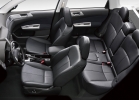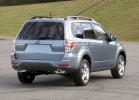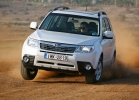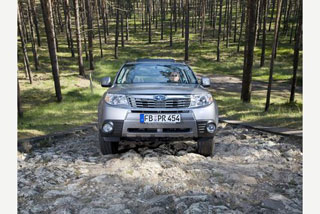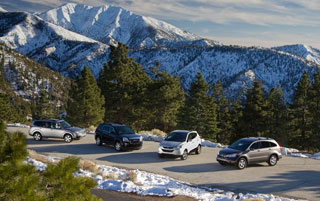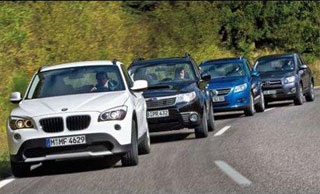Subaru Forester test drive since 2008 SUV
Subaru Forester 2007 (turbo): "Automatic" against "Box"
 Invisible, but tangible benefits of increasing width
Invisible, but tangible benefits of increasing width All those changes that were made to the Subaru Forester car on the occasion of the complete update of its model range are not very striking, this is true. At the same time, the previous model had, according to experts, a number of shortcomings, so everyone expected from the new machine not so much external effects as the corrections of previous flaws. Well, and since it really managed to do this, it is now possible to seriously say that Forester has become nothing more than a cool car from the SUV category.
What, in fact, was required of the new Forester model? Well, I would briefly answer this way: I wanted this car to have such an appearance and be endowed with such running qualities that the driver who prefer Subaru to any other brand of cars would not have disappointment from communicating with him. I will explain my thought. So, taking into account the fact that Forester is still SUV (Sport Utility Vehicle), then, in theory, he must have a proper sports uniform so as not to disappoint the driver if he suddenly wants to have fun and manage in a sports manner. And at the same time, with all his appearance to show that he is ready, in which case, to go with his driver on some adventurous journey. Here it should be borne in mind: as practice shows, Forester is in greatest demand among young people. And what, first of all, does a young man need a SUV car? Well, of course, to go somewhere out of town and drive there to the fullest for their pleasure.
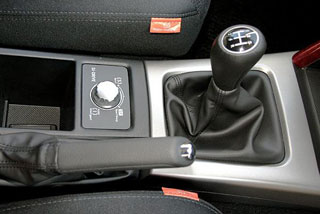 It is clear that when working on the new Forester model, developers could not ignore the young admirers of Subaru. As a result, the transfer of the machine, more precisely, its engine to the control system, which is called Si-Drive. It is worth noting that it is put only on cars with turbo engine. What else? Yes, the design of the rear wheels suspension has changed: now on all wheels without exception, the wheels hang on double transverse parallel levers. In the same way, all cars are equipped without exception by the VDC course stability system (Vehicle Dynamic Control).
It is clear that when working on the new Forester model, developers could not ignore the young admirers of Subaru. As a result, the transfer of the machine, more precisely, its engine to the control system, which is called Si-Drive. It is worth noting that it is put only on cars with turbo engine. What else? Yes, the design of the rear wheels suspension has changed: now on all wheels without exception, the wheels hang on double transverse parallel levers. In the same way, all cars are equipped without exception by the VDC course stability system (Vehicle Dynamic Control). Okay, everything is clear with youth, but what about those owners who are on average or at an older age? For such drivers, as you know, comfort is important (peace, in a word), and that the car is figuratively expressed, a reliable assistant in everyday life to go to the neighboring quarter for shopping, transport something, and so on. It is clear that in order for the machine it is convenient to use in the city, its engine must be reconfigured in such a way that a sufficiently powerful torque is already issuing at low speeds. The designers did so, and now it is a pleasure to drive a car in the city hustle and bustle: I pressed the gas a little, the revolutions are small, and the car has already gone.
Now about external changes. First of all, it should be noted that the car has become larger. In particular, the total
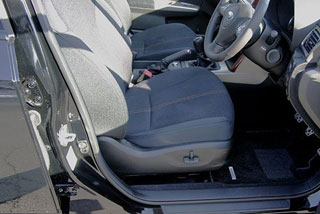 length (now it is 4 560 mm). It is clear that the salon has become more from this. True, in order to be more convenient to be in it, not so much its length is important as the distance between the front and the rear seats, right? So, this distance really increased, and almost as much as the wheelbase of the car (90 mm) increased. As for the length of the cabin, earlier, as you know, it was 2,000 mm, and now it has become more than 205 mm. Now let us recall: before everyone said that it is inconvenient to get out of the car and get inconveniently to get there. Now this drawback, by and large, was eliminated. That's just the luggage compartment in length remains the same as before.
length (now it is 4 560 mm). It is clear that the salon has become more from this. True, in order to be more convenient to be in it, not so much its length is important as the distance between the front and the rear seats, right? So, this distance really increased, and almost as much as the wheelbase of the car (90 mm) increased. As for the length of the cabin, earlier, as you know, it was 2,000 mm, and now it has become more than 205 mm. Now let us recall: before everyone said that it is inconvenient to get out of the car and get inconveniently to get there. Now this drawback, by and large, was eliminated. That's just the luggage compartment in length remains the same as before. Further, it is very important to note that the width of the new car has also become larger. If the numbers are needed, here they are: before the width was 1,780 mm, now another 45 mm has increased to it. Yes, but at the same time, the distance between the extreme points of the left and right door mirror was less than 10 mm, which was a consequence of a change in the configuration of the mirror itself.
How did this increase in width turn out for the car and for its driver? At first glance, it seems that nothing is special except that
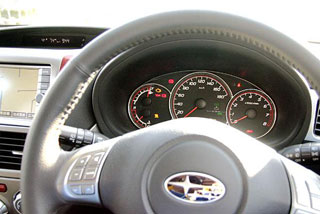 her dimensions increased. However, if you figure it out, it turns out that this is not entirely true, more precisely, not at all. I am sure that anyone who is used to using the Forester of the previous generation, sitting behind the wheel of a new car, immediately feels everything himself. For the rest, I will say this: the minimum turning radius decreased, and plus the machine to this began to stay more evenly.
her dimensions increased. However, if you figure it out, it turns out that this is not entirely true, more precisely, not at all. I am sure that anyone who is used to using the Forester of the previous generation, sitting behind the wheel of a new car, immediately feels everything himself. For the rest, I will say this: the minimum turning radius decreased, and plus the machine to this began to stay more evenly. The fact is that due to an increase in the width of the machine, it became possible to expand the wheelbuilding (the distance between the right and left wheel.). What's next? The track has become wider, which means the length of the lower front suspension levers increases. That is, the suspension course is the same, and the swing angle of the lower lever is smaller, due to which great stability is ensured.
But that's not all. Since, I repeat, the lower levers have become longer, the clearance between the body and the wheels also became larger, and from this, as you know, it became possible to allow the wheels to turn to a larger corner. And so it happened that before the minimum radius of the turn was 5.3 meters, and now it has become 10 mm less.
 A machine with a mechanical box made it possible to accurately understand the nature of the interaction of the engine and its turbine
A machine with a mechanical box made it possible to accurately understand the nature of the interaction of the engine and its turbine It is easy to guess that, developing a new Forester model, the designers pretty worked hard over the engine. In what direction was the work carried out? Well, firstly, it was necessary to ensure that the engine developed a sufficiently powerful torque in a small and medium speed range. The solution to this problem required slightly increasing its rated power. The size of the peak torque did not undergo serious changes, but the car began to run more freak.
By the way, in spite of everything, Forester continues to be produced not only with automatic, but also with a manual gearbox. Moreover, the mechanics are provided for all models, no matter what engine it goes with simple or turbo. It would be interesting, of course, to try both options, but it so happened that in the program of current tests only Forester with a turbocharged engine was listed. Thus, I was driving a Forester XT, equipped with a manual gearbox.
The driver’s seat in the new Forester salon is slightly higher than in the salon of the previous generation. Previously, the seat was 640 mm from the ground, and now it turned out to be 30 mm higher. And, I must say, I immediately felt the difference in the road review improved significantly. Such elation was especially affected by steep turns and intersections, because due to the changed angle, the front racks are no longer in the side and no longer interfere. And since this, I would say, openness directly affects the safety of movement, this innovation should be evaluated positively in any case.
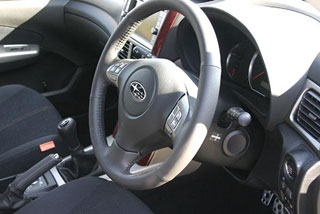 It is good that the steering column has two types of adjustment both in inclination and in length. The adjustment of the chair in my car was carried out not manually, but automatically, and provided, among other things, a smooth change in the inclination of the seat. As you know, it is customary to put seats in the SUV salons with an increased course of return, was not an exception in this regard and the Forester chair. And, nevertheless, moving the steering column and changing the tilt of the seat, I quickly managed to fit everything to myself. And imagine that you are making a long journey, and you come across roads and even, and not very. In such cases, often, you want to change the position of the body relative to the steering column so that it becomes easier to steer. I think that the driver will be able to do this freely behind the wheel of a new Forester car.
It is good that the steering column has two types of adjustment both in inclination and in length. The adjustment of the chair in my car was carried out not manually, but automatically, and provided, among other things, a smooth change in the inclination of the seat. As you know, it is customary to put seats in the SUV salons with an increased course of return, was not an exception in this regard and the Forester chair. And, nevertheless, moving the steering column and changing the tilt of the seat, I quickly managed to fit everything to myself. And imagine that you are making a long journey, and you come across roads and even, and not very. In such cases, often, you want to change the position of the body relative to the steering column so that it becomes easier to steer. I think that the driver will be able to do this freely behind the wheel of a new Forester car. The car, as I said, was manually switching speeds, and, of course, I often had to work as a clutch pedal. And I’ll tell you honestly: she was somewhat tired of me, because she succumbed to pressure rather reluctantly. Of course, I understand that the car is with a turbo engine, and there really are powerful springs so that the driver feels better to clutch on the principle of the principle of the pedal, the weaker/stronger the connection of the engine with the transmission. Yes, I agree, let the pedal rest, but not to the same extent! It’s good that there was often enough half -sleeping, otherwise I would not know! Well, of course, it helped that the engine, as they say, did not tear, but increased power evenly. In a word, the pedal is difficult, but too much clarity and accuracy when treating it is not required.
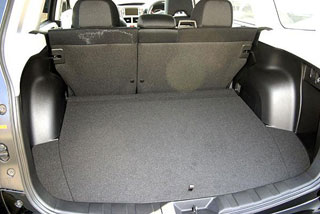 To make a more complete impression of the character of the engine and its features, it is best to drive a car in which this engine works paired with a manual gearbox. So I decided to take the opportunity and do the next experiment. I stopped the car on a short lifting, and then tried to move out, believing that in this case I would be able to understand how the torque value changes and how at what point the turbine comes to the aid of the engine. I will say right away: the designers worked on the engine for not in vain, so, unlike the previous model of a clear lack of torque at low speeds, it is no longer felt. Without reaching 2,000 revolutions, I turn on the first gear and I put an accelerator on the floor. However, despite my such decisive gesture, I did not wait for a sharp increase in torque in response. Instead, the engine smoothly added power, moved the car forward and began to disperse it, so energetically that there was no question of any discontent on my part.
To make a more complete impression of the character of the engine and its features, it is best to drive a car in which this engine works paired with a manual gearbox. So I decided to take the opportunity and do the next experiment. I stopped the car on a short lifting, and then tried to move out, believing that in this case I would be able to understand how the torque value changes and how at what point the turbine comes to the aid of the engine. I will say right away: the designers worked on the engine for not in vain, so, unlike the previous model of a clear lack of torque at low speeds, it is no longer felt. Without reaching 2,000 revolutions, I turn on the first gear and I put an accelerator on the floor. However, despite my such decisive gesture, I did not wait for a sharp increase in torque in response. Instead, the engine smoothly added power, moved the car forward and began to disperse it, so energetically that there was no question of any discontent on my part. Then the representative of the technical group said that their main task was to prevent a sharp increase in the torque when the turbine is connected to the engine. In order, he continued to solve and provide the car with a smooth move, it was decided to use a lesser turbine developed by Mitsubishi Heavy Industries. However, if we limited ourselves to this, this would lead to a significant deterioration in the torque characteristic of the engine as a whole. Therefore, along with the replacement of the turbine, we had to work out the intake system, adjust the gas distribution, and now, please: the torque not only did not decrease, but even raised a little! Well, truly, who wants to, he will achieve his!
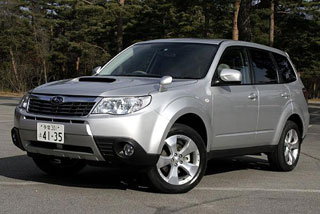 Behavior behavior: Experience acquired by Subaru at the WRC championships again made itself felt
Behavior behavior: Experience acquired by Subaru at the WRC championships again made itself felt What else struck me was the ability of the car to move with high speed at relatively low engine speeds. This minimization of the speed of the crankshaft was needed in order, firstly, to reduce fuel consumption, and secondly, to reduce the noise of the motor. See: if the new Forester is equipped with a 5-speed manual, at a speed of 100 km/h, the engine holds about 2,500 rpm, and if the machine is automatic, then even less (approximately 2,200 rpm). Agree, this is very little.
With this combination of the speed and speed of the engine rotation, to hope that the machine will be able to sharply add a hopeless business. So it is here: I could not get such an acceleration so that I will not be pressed into the back of the chair, but to make a breakthrough, sufficient to overtake the driving car in front without switching to a reduced gear, it turned out to be possible. This is what is the right, appropriately configured turbine!
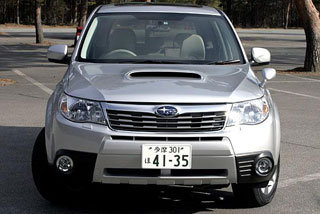 Or take control. On the one hand, all new Forester cars with turbo engineers are still equipped not by an electric, but by a hydraulic steering drive. But on the other hand, the developers have corrected the geometry of the front suspension, changed the design of the rear wheels suspension (now they hang on double transverse parallel levers) and thus provided their machine with a greater supply of stability.
Or take control. On the one hand, all new Forester cars with turbo engineers are still equipped not by an electric, but by a hydraulic steering drive. But on the other hand, the developers have corrected the geometry of the front suspension, changed the design of the rear wheels suspension (now they hang on double transverse parallel levers) and thus provided their machine with a greater supply of stability. For example, I need to fit into a turn with a simultaneous increase in speed. I turn the steering wheel and immediately feel that the body began to roll. Yes, but then, wanting to increase the speed, I press the gas pedal, I put down again, it is quite justified that the body will be tilted even more. But in fact, I did not feel anything like that. Instead, an amazing sensation of a clean turn (that is, when the body, changing direction, holds strictly horizontally).
What is the reason that such, in general, is not a low car so evenly holding on turns? Is it because his front chassis is completely borrowed from the new Subaru Impreza model? The representative of the technical group I already mentioned on this subject spoke like this: yes, he confirmed, you guessed, in this sense, much in common between these machines. This is the general, in particular, in a special position and correctly selected points of fastening the steering rack, which
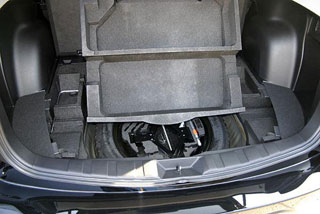 it allows you to significantly avoid such an undesirable phenomenon as a change in the angle of rotation of the machine due to the sharp compression of the suspension. In other words, the force begins to act on the car, striving to turn it around the longitudinal axis, and the rail rests in every way pressure and does not want to move. The next moment is the change in the installation of the front wheels. In particular, the angle of longitudinal inclination of perndniral racks (the so -called caster) used to be 3 degrees, and now it is 5.3 degrees. In this regard, the distance between the center of the wheel contact spot with the road and the intersection of the axis of the rack with the road, which used to be 16 mm, has also changed, and now it has become 31 mm. As a result of all these changes, it was possible to increase the stability of the car, and this is important. Well, as you can see, the experience accumulated during the preparation of machines for the world rally championship (WRC) also made it here.
it allows you to significantly avoid such an undesirable phenomenon as a change in the angle of rotation of the machine due to the sharp compression of the suspension. In other words, the force begins to act on the car, striving to turn it around the longitudinal axis, and the rail rests in every way pressure and does not want to move. The next moment is the change in the installation of the front wheels. In particular, the angle of longitudinal inclination of perndniral racks (the so -called caster) used to be 3 degrees, and now it is 5.3 degrees. In this regard, the distance between the center of the wheel contact spot with the road and the intersection of the axis of the rack with the road, which used to be 16 mm, has also changed, and now it has become 31 mm. As a result of all these changes, it was possible to increase the stability of the car, and this is important. Well, as you can see, the experience accumulated during the preparation of machines for the world rally championship (WRC) also made it here. After completing my trip to the Forester XT with a mechanical transmission, I still managed to sit behind the wheel of the same car, but armed with a machine gun. And you know what, as soon as I started to move, I immediately noticed that the car was running wrong. I would say a little hard. I think, however, that the difference in weight has nothing to do with it, the main thing is what is commonly called internal losses. And all because the developers still refuse to put a multi-stage box on the car, and
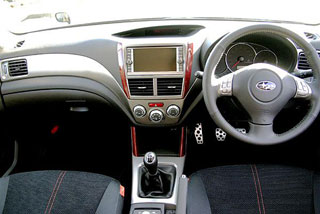 they are limited only to a 4-speed automatic. As a result, forced stiffness, which in some cases causes a persistent sensation of a decrease in traction. In a word, the faster the transition to a 5-speed, or even 6-speed transmission, the better.
they are limited only to a 4-speed automatic. As a result, forced stiffness, which in some cases causes a persistent sensation of a decrease in traction. In a word, the faster the transition to a 5-speed, or even 6-speed transmission, the better. In the meantime, the situation is as follows: the engine has the same speed characteristics, but is forced to work in tandem with a 4-speed automatic box. Well, imagine that you have to move back with other cars (it often happens in the city during peak hours). Your speed is small, and in such a situation you are absolutely unexpected and sharply accelerated. Therefore, the power transmission should be debugged in such a way that it is more as possible from the transition to a reduced gear, right? In turn, the engine, which, as mentioned earlier, can be added sharply in the region of 2,000 rpm, you also need to hold a little, otherwise you never know what will happen. This is where these very internal losses are formed. By the way, I decided to check my guess and perform a steep turn with acceleration in the same place where I had performed exactly the same actions in a car with a manual. What happened? At first everything went the same way, but then, when it was time to put pressure on the gas, for the purity of the experiment I did not put the pedal completely, but as I did before. And suddenly I realized that this turned out to be clearly not enough: the engine did not want to sharply increase the power, and the automatic box, in turn, did not want to switch to a low gear, so!
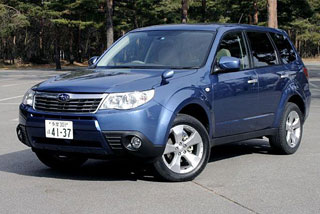 If the box is a machine gun, then it is desirable that it is 5, or even a 6-speed
If the box is a machine gun, then it is desirable that it is 5, or even a 6-speed Of course, if you try, then force the box to switch to a reduced gear, you can click, as it should, the gas pedal and get your Kick Down. But this is a one -time operation that cannot change the control program. Therefore, at the exit from the turn, if you need to increase the speed again, it turns out that it is growing wrong again, and, in the end, it becomes clear that the machine, no matter how hard, is still moving the way you want.
In such cases, you can seek help from the SI-Drive system. Say, transfer it from Sport mode to S#mode, so that the previous installation to prevent sharp jerks on a small move would stop acting. In this case, the engine begins to pull with greater force, and then please enter the steep turn and get your share of pleasure. But if you take the way as a whole with all its unpredictability, it would be better to have at your disposal a normal 5-speed (no less!) Automatic box for ordinary riding. Then the programs would be distributed more evenly, the gear rates would be optimized, and the ride would probably go even.
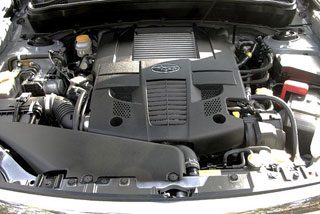 But since there is no such automatic box by car, I decide to do this. I take the transmission control handle, which is in position D, and I take it to the right, thereby turning to the Sequential Sport Mode mode. According to the scheme practiced in Subaru, this position of the transmission lever means that when you calmly handle the accelerator, switching speeds through an increase in the average scenario (see the changing numbers on the control board!). And only when the driver drives the car, holding the gas pedal almost near the gender, the transmission will begin to function in Sport Mode mode. Namely: the transition to increased transmission occurs when the revolutions reach their maximum value for this speed.
But since there is no such automatic box by car, I decide to do this. I take the transmission control handle, which is in position D, and I take it to the right, thereby turning to the Sequential Sport Mode mode. According to the scheme practiced in Subaru, this position of the transmission lever means that when you calmly handle the accelerator, switching speeds through an increase in the average scenario (see the changing numbers on the control board!). And only when the driver drives the car, holding the gas pedal almost near the gender, the transmission will begin to function in Sport Mode mode. Namely: the transition to increased transmission occurs when the revolutions reach their maximum value for this speed. In the meantime, the driver does not gas and leads the car at an average speed, it practically does not matter how the switching handle on D or on Sequential Sport Mode costs. And if so, then you can advise from the very beginning to choose the Sequential Sport Mode, and then, perhaps, riding will give more pleasure.
In principle, the automatic transmission control circuit is the same, it does not matter if you drive a car with an ordinary engine or with a turbo engine. But if I was asked in which car Subaru makes itself fully felt, then I would probably answer: in a model with an atmospheric engine!
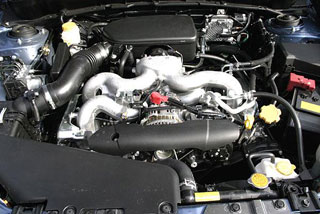 By the way, the Forester car with a regular engine has become the first model registered under the Subaru brand, which uses an electric type steering wheel (micro -litting machines do not count). And you know what, at first it seemed to me that this amplifier made by KYB perfectly copes with its own, so to speak, managerial duties, but then, unfortunately, I realized that something in it is still wrong. I think that everyone can verify this if the movement strictly in a straight line starts turning, comparing the steering wheel and the following change in the position of the machine relative to the road. At the same time, at first the gaze is fixed on the point selected in front, then the hands turn the steering wheel in such a way as to immediately get into the target, and then the accuracy of the hit is evaluated.
By the way, the Forester car with a regular engine has become the first model registered under the Subaru brand, which uses an electric type steering wheel (micro -litting machines do not count). And you know what, at first it seemed to me that this amplifier made by KYB perfectly copes with its own, so to speak, managerial duties, but then, unfortunately, I realized that something in it is still wrong. I think that everyone can verify this if the movement strictly in a straight line starts turning, comparing the steering wheel and the following change in the position of the machine relative to the road. At the same time, at first the gaze is fixed on the point selected in front, then the hands turn the steering wheel in such a way as to immediately get into the target, and then the accuracy of the hit is evaluated. And this is what came of it. At the first stage, while the steering wheel still did not deviate from the average position, it went softly and without noticeable resistance. Probably, the sensor of the rotating moment on the steering shaft really has excellent sensitivity. One way or another, but earlier when dealing with EPS (Electric Power Steer) systems, I did not experience this. In a word, fine!
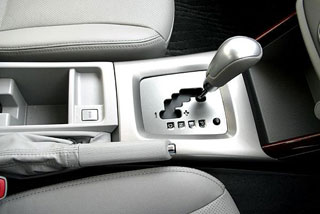 Meanwhile, I continued to turn the steering wheel and suddenly felt that he was heavier. At the same moment, the amplifier quickly came to his aid, after which the steering wheel went easier. It lasted only one moment, and nevertheless, the hand jerked, and this was enough to, so that, so could put it. There is such an expression: to turn softly, as for rails, and so, this feeling is like in the rails at that moment. In short, if the driver, moving at high speed, wants his car always walking like a thread, he will have to work hard. Ah, if not for this flaw! Then I could definitely say: yes, this EPS really is the highest aerobatics!
Meanwhile, I continued to turn the steering wheel and suddenly felt that he was heavier. At the same moment, the amplifier quickly came to his aid, after which the steering wheel went easier. It lasted only one moment, and nevertheless, the hand jerked, and this was enough to, so that, so could put it. There is such an expression: to turn softly, as for rails, and so, this feeling is like in the rails at that moment. In short, if the driver, moving at high speed, wants his car always walking like a thread, he will have to work hard. Ah, if not for this flaw! Then I could definitely say: yes, this EPS really is the highest aerobatics! Technical characteristics Subaru Forester 2.0 XT
Full length: 4 560 mm.
Full width: 1 780 mm.
Complete height: 1 675 mm.
Wheel base: 2 615 mm.
Machine weight: 1,480 kg.
Drive: 4wd.
Engine: 2-liter, 4-cylinder with horizontal cylinders, turbocharging with an intermediate air cooler, DOHC gas distribution mechanism, developed power 169 kW (230 hp) at 5 600 rpm, maximum torque 32, the moment 32, 5 kg-m (319 nm) at 2 800 rpm.
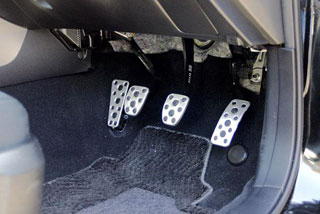
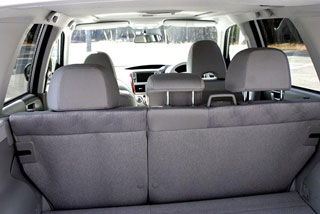
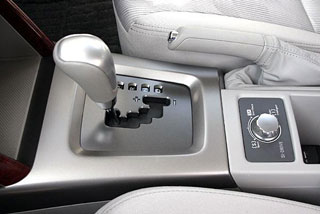
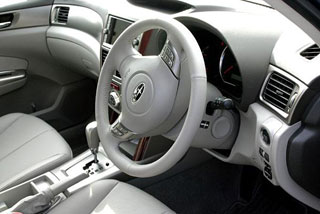
Source: AGN
Video Subaru Forester test drive since 2008
Subaru Forester Crash Video since 2008
Subaru Forester test drive since 2008
Subaru Forester Crash Test since 2008
Krassh Test: Detailed Information91%
Driver and passengers
73%
Pedestrians
91%
Children-passengers
86%
Active security system


